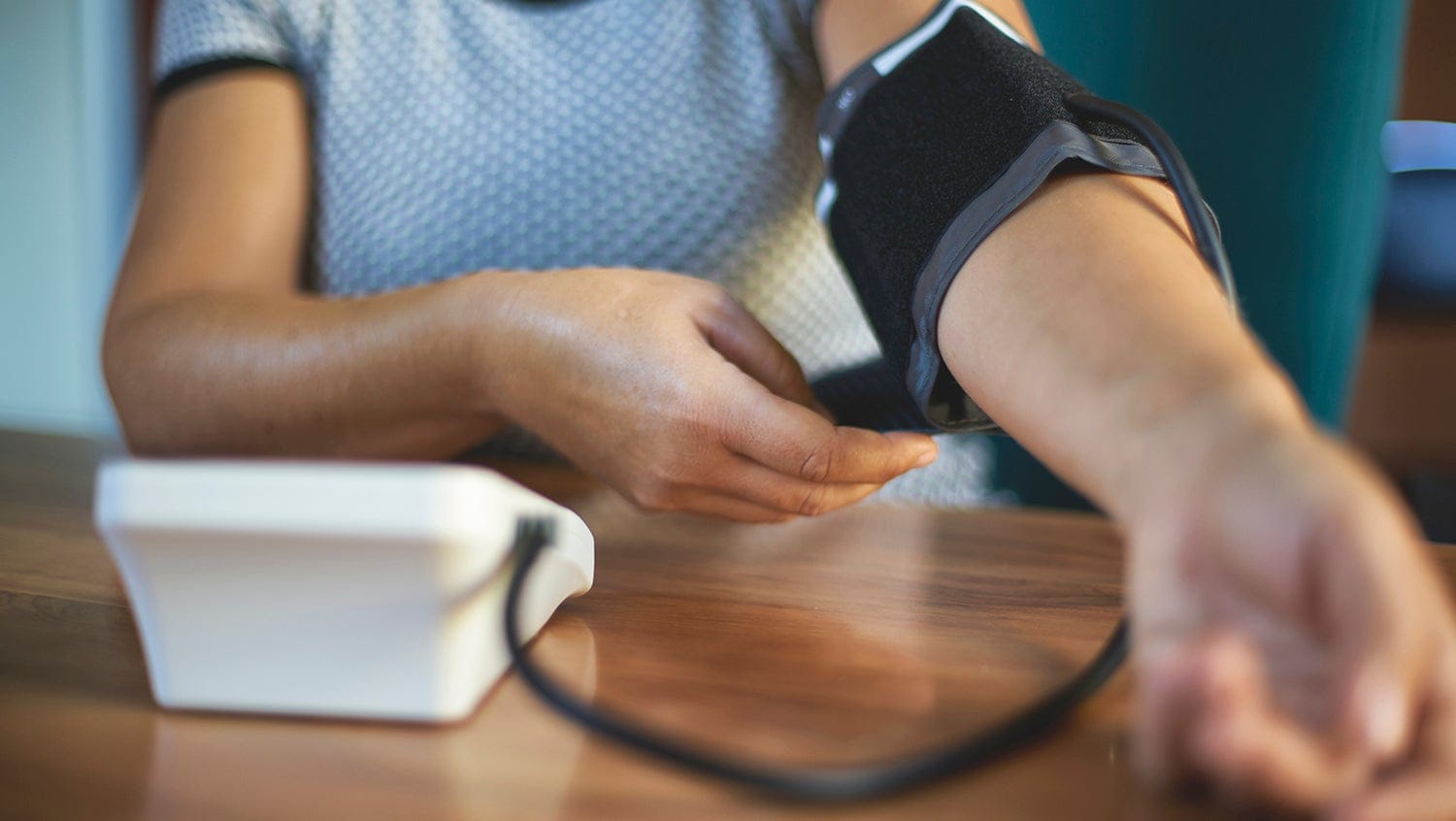Remote Blood Pressure Monitoring: The New Equitable Landscape of Postpartum Care
July 20, 2020
By Meryl Bailey

Getty Images
New cloud-based monitoring eliminates barriers to clinic visits and puts patients and providers in more frequent touch during the risky months after giving birth.
Some of the starkest health statistics loom over hospitals’ Black expectant mothers: Black women in the United States are three times more likely to die during pregnancy and childbirth than white women, and often from preventable causes such as uncontrolled hypertension. Heart disease and stroke cause nearly one-third of maternal deaths in the United States. Shockingly, the majority of these episodes occur weeks or months after giving birth, when most women believe they are no longer in danger of pregnancy-related complications.
Routine blood pressure monitoring and quick intervention are vital to mitigating the risk of postpartum hypertension and its related complications. While some hospitals arrange for the close follow-up of high-risk mothers, employing a visiting nurse to check blood pressure in the home or scheduling frequent clinic visits for the same, these strategies may not reach those most in need. Some zip codes are not served by visiting nurse organizations, not all insurance covers a visiting nurse, and many women are left ineligible. Many women also face barriers to returning to the hospital for follow up appointments, including childcare arrangements and the cost and time to travel the medical center for what may only be a 10-minute visit.
No-show rates for postpartum appointments at hospitals serving low-income and non-white patients are often abysmally high because of these barriers, says Christina Yarrington, MD, director of labor and delivery at Boston Medical Center (BMC), the largest safety-net hospital in New England. The majority of BMC’s patients are from underserved populations — many live below the federal poverty level, and many are minorities who are at risk for poor health outcomes due to consequences of systemic racism and other inequities.
Approximately 30% of her patients manage hypertensive issues during their pregnancies, says Yarrington. Months ago, she and her team began exploring the possibility of providing easy-to-use blood pressure cuffs in the homes of her patients.
The high-tech blood pressure cuffs may seem like a surprising addition among the ointments, baby wipes, and other newborn essentials sent home with new mothers discharged from BMC this year. But doctors hope that the new tool will improve the health outcomes of mothers at risk for postpartum hypertension. The cuffs, which use cloud-based technology, are part of a pilot intervention supporting the obstetric department’s remote outreach during the transition to telehealth for postpartum care due to Boston’s COVID-19 surge.
“Things just change so quickly postpartum — we see people go from normal blood pressure to scary numbers within a day or two,” says Yarrington. “This intervention aims to improve the frequency of readings and get medication to a patient before her blood pressure starts to become threatening.”
How it works: Remote blood pressure monitoring and review
Although the partnership with health tech company Rimidi had been in the works since early 2020, Yarrington and her colleagues sped the distribution of the cell-enabled blood pressure cuffs in April, when COVID-19 forced telehealth appointments for the majority of postpartum patient follow-up. While the intervention was originally designed to make health monitoring more accessible to patients, the ability to monitor blood pressure during telehealth visits has also become critical to keeping new mothers safe at home and out of the hospital unless absolutely necessary.
Using cellular-enabled technology, the blood pressure cuff captures readings with one touch, then encrypts vitals and sends data to a HIPAA compliant web portal using the local cell phone network. The technology does not require a cellphone, data plan, or any additional interfacing with an app.
A core group of six medical students support the risk identification, cuff distribution, and bedside education for mothers using the technology — the original plan for staffing the new intervention was upended when case managers and nurses shifted to new roles to serve the swelling population of critically ill COVID-19 patients at the hospital. Instead, Yarrington turned to medical students whose clinical rotations were suspended due to the pandemic.
After patients learn how to use the cuffs, a high-risk OB nurse monitors the web portal of blood pressures and alerts a physician on call if medications need to be initiated or changed. If the nurse detects dangerous blood pressures, she contacts the patient and directs her to the hospital for further evaluation.
In the first eight weeks of the pilot initiative, 80 women used the new cell-enabled blood pressure cuffs at home, with more than 1,200 blood pressure readings submitted and reviewed. Yarrington highlights that this simplicity and ease of use were necessary for the intervention to be effective for her patient population.
“They’re already busy with their newborns, their kids, trying to keep their jobs going and bills paid,” says Yarrington. “I knew the more steps I asked them to take, the more likely it would be to fail.”
The devices seem to be both reassuring and empowering for her patients. Yarrington shares the story of a woman who was able to call an ambulance for herself when she tested her blood pressure after feeling unwell, finding it to be wildly high. With that information, she was able to get the prompt care she needed.
“That’s the whole idea: to put healthcare and the control of health back into the patient’s hands,” Yarrington says.
Improving long-term health outcomes
As the COVID census has come down in Massachusetts, the postpartum nursing staff at BMC have adopted the new intervention for remote blood pressure management. Yarrington sees limitless possibilities for how remote blood pressure monitoring can improve care and provide insight for physicians and researchers interested in better managing hypertensive complications. The new devices may also help women better engage in primary care after pregnancy.
“We know that women who’ve had hypertensive complications during pregnancy are at higher risk of cardiovascular disease five to 10 years down the road. These women really need a connection and transition into primary care,” she says. “The cuff is a tool to use with me during postpartum, but after six weeks I could pass this tool off to the doctor who will be the patient’s partner for managing blood pressure long term.”


